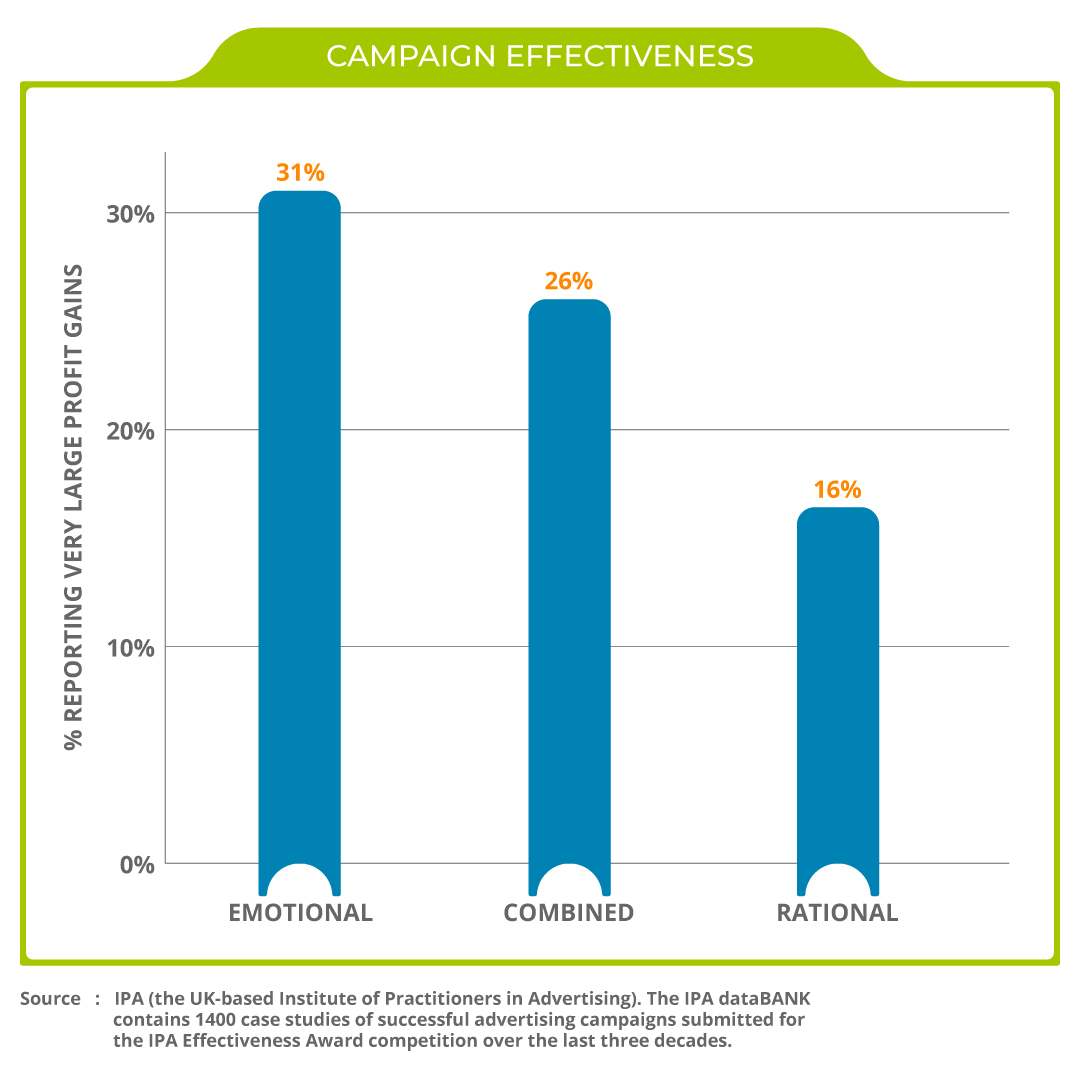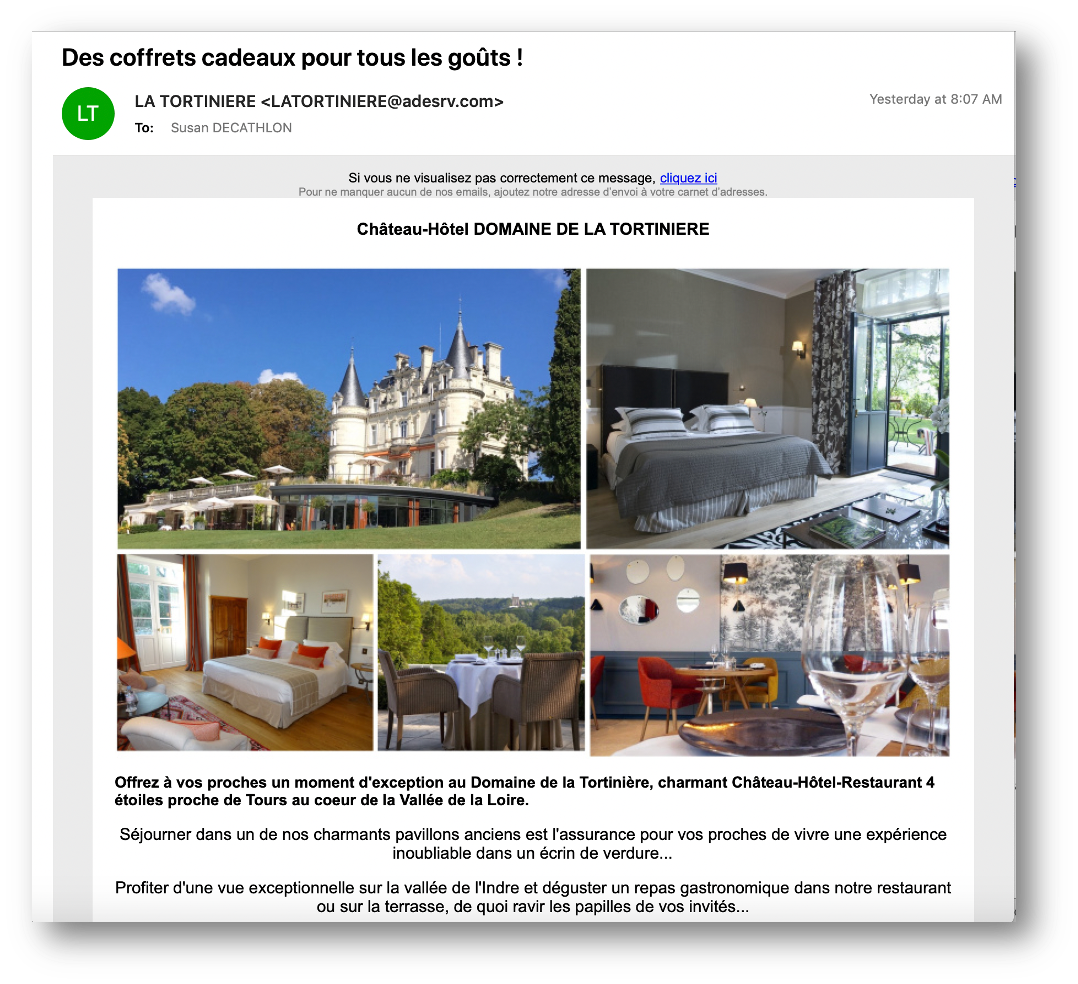
Let’s Get Emotional
BY susan dematei
In last week’s blog post we talked about showing human faces in ads. A second, albeit related, scientific fact is that people respond to emotional arguments in advertising over rational ones. A recent analysis of 1400 advertising case studies in the US showed that those with emotional content performed twice as well as those with only rational content.

Why is that? It’s because people feel first before they think.
A Portuguese-American neuroscientist and Professor of Psychology, Philosophy, and Neurology, at the University of Southern California named António Damásio wrote a book in 1994 about this called Descartes’ Error: Emotion, Reason, and the Human Brain. The book centers on the physiology of rational thought and decision and how these faculties could have evolved through Darwinian natural selection.
In the book, he chronicles time spent studying individuals with damage to the area of the brain where emotions are generated and processed. Interestingly, while his subjects functioned just like anyone else, they all had trouble making decisions. Even simple decisions about what to eat proved difficult. They could describe what they should be doing to eat, but without emotion, they could not choose what to eat.
An excellent marketing book, “How Customers Think,” highlights data from Gerard Zaltman on the influential role of emotion in our decision-making process. Zaltman found that 95% of understanding happens beyond our conscious brain, instead coming from our subconscious, emotional brain.
Because we know people make decisions based on emotions, in marketing, we talk a lot about using psychological triggers to get potential customers to click, convert, engage, or react. By leveraging the common psychological triggers that we all have – you can drive more sales. But what are those common psychological triggers?
How To Engage on an Emotional Level
To begin to find this out – let’s start by looking at your own triggers. What are your reasons for reaching out to your customers?
- You may need to make your sales goals.
- You may have to move inventory along.
- To be more specific, maybe it’s the end of one vintage,
- Or you are bottling wine or switching inventory and need the space.
- Another reason could be that you’re looking at your marketing plan, and there is a square that says you’re supposed to send an email out next week — and you have no idea what to say.
Looking at the above list of needs, a new score or press for a wine, a case sale, or a shipping discount seems like reasonable content for the email.
But let’s look at your customer’s reasons for opening up an email from you.
- Maybe they miss you.

Yes, this can be true. My husband and I stayed at this castle in the Loire Valley when we went there 11 years ago. About once or twice a year, they send me an email. I don’t know what it says because I don’t read French – but I love opening it and looking at the pictures. It reminds me that we were there in the Spring; it rained every day, so it was lush and smelled like earth and violets, and they had this fantastic local honey which I still remember is miel in French that we’d have for breakfast every day. I remember all that, and I smile, and I miss them.
Remember, this is what YOUR emails can do. Your customers took their time and money to visit your winery on vacation. Of all the places in the world to go, they chose you! Honor that. Recognize that. And remind them why.
2. You make them happy.
I’m a self-reported nerd, and my husband and I are into odd things like bulldog rescue, pueblo Indian pottery, and high-end wooden puzzles. The email lists that I subscribe to are pretty varied. Wine is also a passion, but I live it every day. So, amid all of my wine emails, when I get one from a gallery in Santa Fe or Ebay about a puzzle I’ve been watching — I drop everything and at least scan it. Why? Because it’s my hobby — I’ve chosen to be interested in it. It makes me happy.
Remember, this is how wine is to your customers — this isn’t a job; it’s something that makes them happy.
3. There might also be a calendar trigger— like a birthday, graduation, family dinner, or holiday coming up.
4. Or there is no occasion. Maybe your customer wants a nice bottle of wine for a random Tuesday night. There is no other reason than they are looking for an affordable luxury.
So, look above at your customer triggers for opening an email. Nowhere on your customer motivation list is it likely that they opened your email because they were waiting to save money on wine or thought they needed more 90+ point wines.
So why does everyone promote themselves on prices and scores? This is a bad idea because it is a rational response to an emotional problem.
And this is all good news if you’re a small winery. Research has proven our brain’s ability to categorize emotional input without cognitive association or even awareness. (Pringle and Field). But you must work harder to create connections if your name recognition is lower. What that means is it is possible for people to attach emotion to a thing (or brand) they don’t know, but it’s difficult. Therefore, most researchers suggest a smaller brand might have to take the “combined” rational and emotional approach, even if it is slightly less effective.
What does this all mean? It indicates that in all cases and for all brands, including the benefit to the customer or some reason why they should be interested in your story is a better strategy than promoting product specifications.
1 Galfano Giovani, 2018 published “Eye gaze cannot be ignored (but neither can arrows).”
2 IPA (the UK-based Institute of Practitioners in Advertising). The IPA dataBANK contains 1400 case studies of successful advertising campaigns submitted for the IPA Effectiveness Award competition over the last three decades.
Susan DeMatei is the founder of WineGlass Marketing, a full-service direct marketing firm working within the wine industry in Napa, California. Now in its 10th year, the agency offers domestic and international clients assistance with strategy and execution.
WineGlass Marketing is located in Napa, California at 707-927-3334 or wineglassmarketing.com


